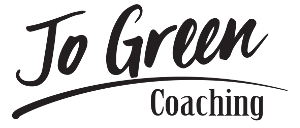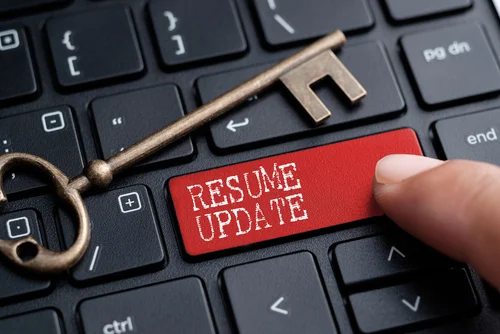Five ways to write yourself into a new job
I recently chatted to a friend who’d reviewed and ranked sixty eight job applications for a dynamic role in a great company. The advertisement was clear about the cultural fit being more important than direct industry experience. This was a job for someone who could show they’d researched the company and understood their aims and ethos.
Yet my friend noted that nobody, including the five people she eventually shortlisted, had delved into the company’s impressive website or scrolled their social media. Nor had they picked up the clues embedded in the advertisement.
Job applications she said ‘should be less about you and more about them.’
Although this might sound counter-intuitive, it’s wise advice for the entire application process including the interview.
Next time you set out to sell yourself in print, here are five ways to show you genuinely know what you’re in for and that you’re raring to go.
Ace the six second challenge and target the interview
A ‘less about me and more about them’ approach helps you write a resume that survives the first cull and supports a strong interview. Combine clear layout with simple, active language and heaps of numbers. When someone (human or robot) spends around six seconds scanning your resume, you’ll have an edge over wordier competitors with fewer quantified achievements.
Put your potential interview in context. For you, it’s heart stoppingly important. For your interviewer, it may not be the highlight of their hectic day. Maybe they’ll arrive in the nick of time without having read your application in detail. Focus their attention with a cliché free resume choc full of ‘skimmable’ talking points that you’re prepped to discuss. You’ll lay the groundwork for a lively targeted conversation.
Word match
Pepper your resume with key words from the job advertisement. Couple central phrases from the ad with action verbs linking your achievements to the role. For example, the job my friend shortlisted for asked someone who could ‘think outside the square’. Here was a cue for dot points demonstrating creativity and initiative headlined by verbs like ‘launched’ or ‘optimised’ or ‘redesigned’.
The advertisement specified being ‘as versatile and adaptive as the amazing products you’ll represent’. Competitive candidates needed to show they’d researched the ‘amazing products’ in question. It was also an ideal opportunity to highlight why and how they’d ‘modified’ or ‘enhanced’ a project, product or process at short notice or in record time.
CV writer Karen Tisdell recommends;
‘Read the advertisement for hints on what and where the problem of the role is - there is always a problem somewhere; it is what the position is tasked with solving. Describe how you have solved similar dilemmas before and your future employer (or recruiter) will be begging to meet you.’
Colour by numbers
Quantifying your achievements is standard resume wisdom. However, it’s not always possible to state the exact amount of money, time or effort you saved or the additional revenue or kudos that followed from your actions. If you can’t lay your hands on the exact figures you can still quantify your achievements in terms of scale, range or frequency.
However you use them, numbers add context and prove that you track the impact of your work. As this pithy, practical article shows they’re key to avoiding boring ‘sideways’ descriptions that underwhelm employers and undersell your skills.
Show depth over breadth
Choose a few recent responsibilities and projects and highlight them in depth. This helps you tell a concentrated, skim worthy story. It sets you apart from others who probably have similar skills and experience but may have crammed in a reference to everything they’ve ever done.
CV writer Lucy Singleton’s advice is:
‘Focus on meaningful achievements. People will hire you based on what you have done before so make it easy for them to understand. No-one wants to read a long mixed up list of bullet points that has no structure. Focus on 3-4 big “themes” from the role and then use metrics and bullets to bring them to life. I always ask people, what are you most proud of in that role, or what did you do in that role to deliver a positive transformation?’
Draft your hard working dot points to cover the core competencies for the role and do one or both of these things:
Show how you made a difference and exceeded expectations
Describe why and when you were applauded and awarded and by whom
Check them against the previous points about active language and convincing numbers.
Double check that every dot point describes and distils your core qualities for the role. Ingenuity, cultural fit and adaptability were essential for the role that my friend shortlisted. A close reading of the advertisement and a visit to the company website would have told candidates that above all, they needed to show they could; absorb new technical information at warp speed, work in a small, tight multidisciplinary team and live the company values of simplicity and integrity.
Present your homework
This is core cover letter business. Add oomph and impact to a dead brill resume by referencing the company’s successes, aims or values. Say how and why they impress and inspire you.
The company my friend works for recently won a prestigious business leadership award. They’ve built a global network of partner organisations in over 50 countries. They’re pioneers in their field and publish a witty, informative newsletter available on their website. Despite all this information being easy to find, none of the applicants referenced it or cited any of it as a reason for being attracted to the role.
Nobody wrote anything like,
‘I would love to work for a company whose values include simplicity and integrity run by a CEO with award winning leadership and vision.’
I don’t write job applications (but contact the wonderful Karen or Lucy if you need some help). However, I‘ll work with you on career change moves that make the process immeasurably easier. These include getting clear about who you are, what you’re offering and what meaningful work looks like for you.
Using AI to help (article add on 2024)
Keeping up with the times, here are a few AI tools that can help with researching roles, checking applications and updating your resume and LinkedIn. AI is constantly evolving so if you spot something else that’s not on this list, please let me know.
1. ChatGPT
Use for research, or for drafting and editing documents. And in the version 4.0, you can attach files to provide it with more context and input. Always make sure you do your own review though.
2. Jobscan
You can check if your resume ATS (Applicant Tracking System) friendly on Jobscan which compares your resume with job descriptions to ensure your application makes it through automated filters and matches key industry terms.
There’s a free and a subscription version.
3. Resume Worded
This is a free tool that provides feedback on your resume and LinkedIn profile, offering tips for optimisation, clarity, and impact.
4. Canva Resume Builder
Canva’s free templates and AI-powered design suggestions can help you create a standout resume that is professional and easy to read. But keep it simple, a cool design but seem appealing but can be too much.
5. Teal
Teal is a free job search management tool with AI features that can help tailor your resume for specific jobs, track your applications, and manage your overall job search.
6. LinkedIn Career Explorer
LinkedIn’s AI tool can suggest potential career paths based on your skills and experience, opening up new opportunities you might not have considered.
Ready to work on your next career? Book a chat.
By Jo Green, Career Change Coach
I know that when you find what you love, heart and soul, your life changes. I work every day with people who are reshaping their current careers, starting new enterprises or searching for a new direction. Basically I help people who don’t like their job to figure out what to do instead!
As a Careershifters and Firework Advanced Certified Coach and experienced career changer myself, I can help you figure out what fulfilling work looks like for you.
Drop me a note to organise a free 20 minute consultation to chat about your career change and how coaching could help.


